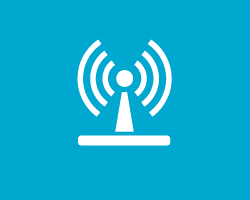 In the old days, if you wanted to monitor your lab’s data, you would either remain by your instrument as long as it took to complete the sample run or dial-in via a telephone modem. Neither option, however, offered much in the way of enhancing productivity.
In the old days, if you wanted to monitor your lab’s data, you would either remain by your instrument as long as it took to complete the sample run or dial-in via a telephone modem. Neither option, however, offered much in the way of enhancing productivity.
Today’s lab, however, has more choices when it comes to ensuring smooth operations and overall equipment effectiveness (OEE) using remote monitoring services, a topic that we have touched upon a few times recently.
“An increase in machine-to-machine (M2M) connectivity is a key enabler in cost savings, efficiency gains, revenue opportunities, and competitive advantage,” said Andy Wight, Director, SCIEX Service Product Portfolio, in a 2014 R&D Magazine article1.
Three years later, the same holds true as remote monitoring offers a low-risk solution in a situation where time is most certainly money.
Consider this statement from Lab Manager Magazine2, which offers an in-depth, third-party perspective on criteria for selecting service options. “A critical factor in selecting the service option for a particular instrument is the longest acceptable time that it can be out of service without seriously impacting customers. When these costs are very high, options offering short times to repair are often the most advantageous choices in spite of higher prices if the lab has no immediate reserve measurement capability2.”
Which brings us to remote monitoring which, “Is no longer a component of a break-fix repair business, but is enabling a service option in its own right,” said Wight in 2014. It can also help you:
- Reduce unplanned downtime
- Report on equipment operating speed
- View instrument utilization information to better assign people and instruments to projects
- Make better decisions about new investments
By now, you understand that remote monitoring services play a critical role in lowering your OEE, as it helps you find the root cause of your errors faster and avoid them when possible. Simply put, reducing downtime means your instruments can be running samples that would otherwise be waiting, costing you throughput, time and expense.
What’s more, is that critical instrument data such as voltages, pressures, temperatures, and system/component states and errors (but never your proprietary sample data), are recorded and can be used to speed up the troubleshooting process, and reduce time to fix.
As instruments become “smarter,” and scientists have access to larger amounts of real-time data, analysis and interpretation becomes more important and more complex. When implemented as an integrated service solution, remote monitoring and data analytics provide innovative capabilities to:
- Drive to higher ROI’s by allowing users to monitor instrument performance and productivity
- Shorten troubleshooting and repair cycles
- Lower support costs by enabling remote monitoring and enhanced diagnostics
- Improve product reliability through predictive pre-failure intervention
In summary, using remote monitoring software enables your lab to save time and costs, without sacrificing on the quality of your analyses.
Want to increase your lab’s productivity with remote monitoring from SCIEX?






 Contact Support
Contact Support
0 Comments